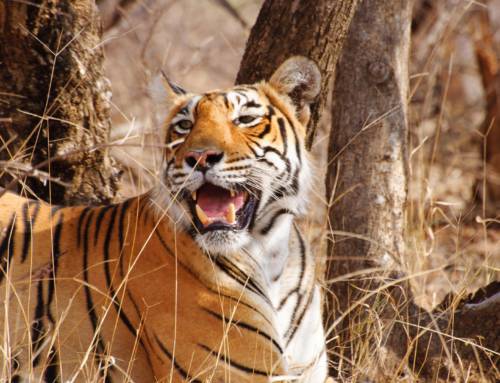This is the first article from our two-part series titled Media Representation of Leopards highlighting CWS’ past research on using media reports for leopard conservation and science.
Authors: Lucrecia Aguilar and Saloni Bhatia
Media reporting is meant to inform the public about the goings-on of the world. It can, however, influence people’s attitudes towards sensitive conservation issues, such as human-wildlife conflict. Recognising the media as important stakeholders in conservation conflicts, researchers Saloni Bhatia, Vidya Athreya, Richard Grenyer, and David W. Macdonald undertook a study to understand how news around leopards was being framed by the print media in Mumbai. They found significant differences in the way local regional and English-language dailies portrayed interactions with the leopard, and a shift in their tone of reporting over a ten-year period.
Mumbai, one of the most densely populated metropolises in the world, is home to a sizeable population of wild leopards that are hemmed in the 100 sq. km. Sanjay Gandhi National Park. Apart from wild prey, leopards can often be seen stalking or chasing stray dogs, which brings them inadvertently close to people. Between the years 2002 and 2004, Mumbai witnessed eighty-four leopard attacks on people – an issue widely covered by local media.
Bhatia and colleagues, who studied leopard-related news reports from 2001 to 2011, found that media reporting was different during and after the 2004 peak in leopard attacks. Newspapers wrote less about leopards after the peak, with their tone changing from negative to neutral over time. This change coincided with increased interactions between media, scientists and wildlife managers, thus indicating that such interactions may have had a positive effect on reporting.
The researchers also found that the English-language daily differed in its portrayal of human-leopard interactions as compared to the regional dailies. Though both identified habitat loss as a major cause of conflict, each proposed very different solutions to the conflict.
The English-language newspaper suggested more people-focused changes (for example, relocating human settlements), while the regional-language newspapers recommended more leopard-focused changes (such as supplementally feeding of leopards). The researchers pointed out, however, that none of the newspapers based their proposed causes or solutions on scientific evidence.
They recommend that involving the media in instances of conflict can potentially minimise misinformation and diffuse public fear. However, the biases of the reporters and editors may sometimes override scientific corroboration.
Research Article: Understanding the Role of Representations of Human-Leopard Conflict in Mumbai through Media-Content Analysis – Saloni Bhatia, Vidya Athreya, Richard Grenyer, David W. Macdonald – Conservation Biology, 2013
Access the abstract here
You can access this summary in Kannada here.



